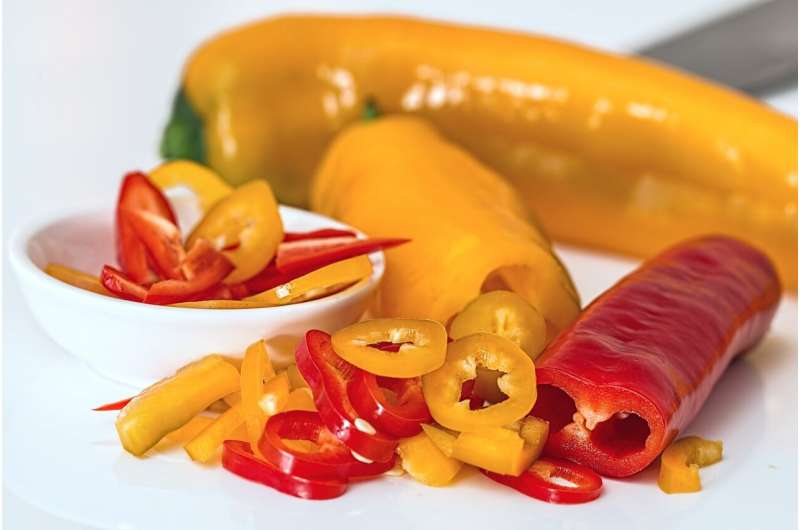This article has been reviewed according to Science X's editorial process and policies. Editors have highlighted the following attributes while ensuring the content's credibility:
fact-checked
peer-reviewed publication
trusted source
proofread
Intervarietal grafts of sweet, serrano peppers on Pasilla 18M

Chili pepper (Capsicum annuum L.) is one of the most important vegetables in the world; it is the most widely cultivated and popular spice. The genus Capsicum has been distinguished by its lack of compatible rootstocks with commercial cultivars to successfully protect against Phytophthora capsici.
Criollo de Morelos 334 (CM334) has been used worldwide in crosses and as a rootstock to protect against P. capsici. However, novel sources of resistance to this pathogen, such as "Pasilla 18M" have not yet been explored as rootstocks. A good rootstock should be highly compatible with the scion and also maintain the quality and/or provide a benefit to the grafted cultivar.
Phytophthora capsici, a soil-borne oomycete, is a significant threat to pepper crops worldwide, causing severe yield losses and economic damage. Traditional methods of managing this pathogen, including chemical treatments and crop rotation, have proven to be only partially effective. The need for a sustainable and efficient solution has driven the search for resistant rootstocks..
The grafting technique is widely used in Cucurbitaceous and Solanaceous crops. Grafting is used to increase vegetable production and resistance to soil abiotic stress such as heat and frost, salinity, drought, water lodging, heavy metals, and organic contaminants. Grafting has been efficient against soilborne pathogens and nematodes.
According to the results for grafting survival, CM334 and Pasilla 18M are excellent rootstocks for the susceptible cultivars Sweet Pepper CW, and Serrano Coloso, recognized for their commercial importance and for their high susceptibility to P. capsici.
All intervarietal grafts, as well as their autografted and ungrafted controls, had high and very similar survival rates. Although grafting in chili peppers (Capsicum spp.) has not been as widely explored as in other vegetables, this technology should be considered as an alternative to chemical control.
Therefore, it is imperative to continue with the search of new rootstocks with resistance not only to P. capsici but also to other biotic and abiotic factors causing important and recurrent crop losses. A good rootstock must have resistance attributes and good compatibility with susceptible cultivars.
Intervarietal grafts with "Pasilla 18M" and CM334 rootstocks had more than 90% grafting survival. "Pasilla 18M" and CM334 are good rootstocks for control of P. capsici. Therefore, "Pasilla 18M" can be used as a new source of resistance against the Mexican isolate CPV-293 of P. capsici.
The findings are published in the journal HortScience.
More information: Araceli Guadalupe Mendieta-Vázquez et al, Survival of Intervarietal Grafts of Sweet and Serrano Peppers (Capsicum annuum L.) on Pasilla 18M as a New Rootstock Against Phytophthora capsici Leo, HortScience (2023). DOI: 10.21273/HORTSCI17084-23
Journal information: HortScience
Provided by American Society for Horticultural Science





















